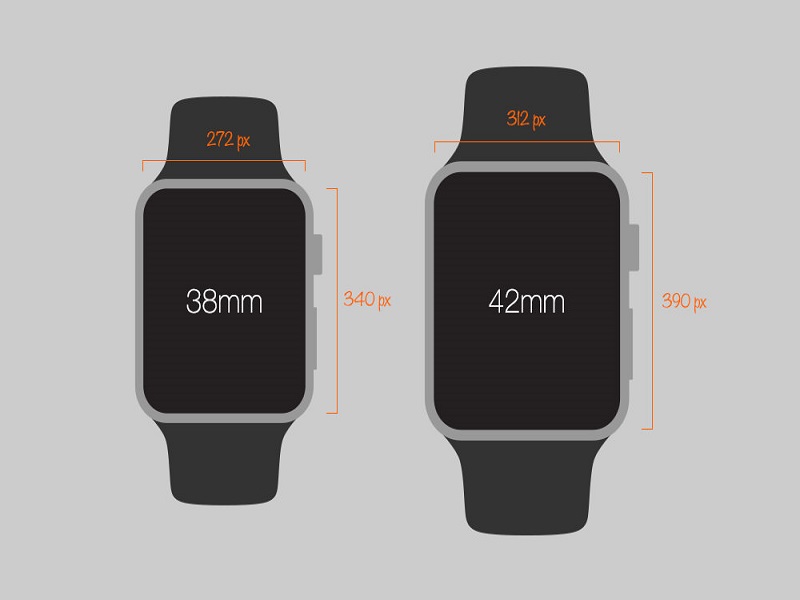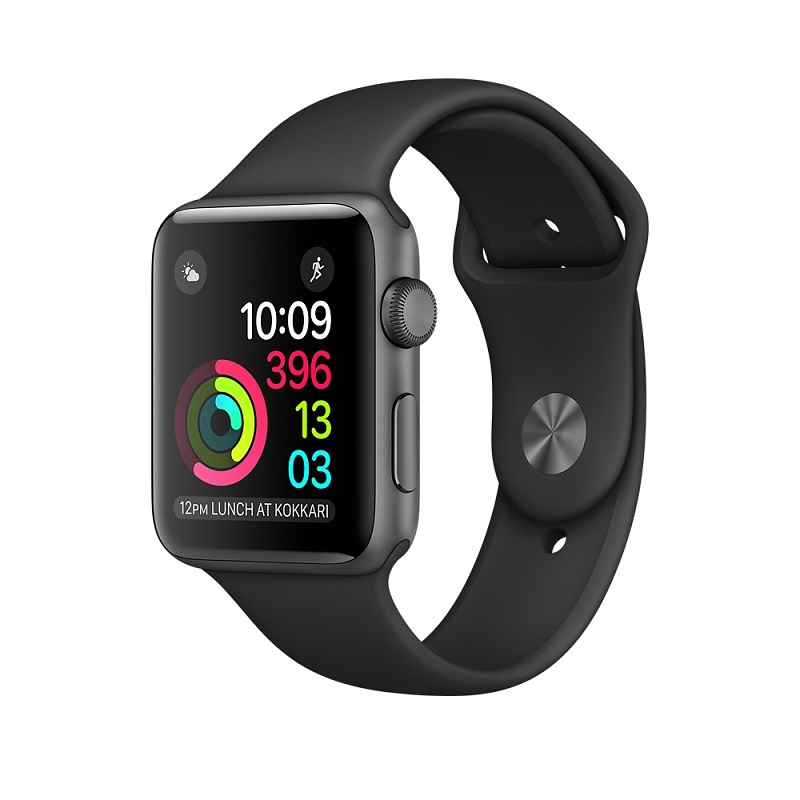The Apple Watch Series 1 debut in September 2014 marked more than just the introduction of a new product. It signaled Apple’s ambition to redefine the landscape of wearable technology, an arena where fashion meets function. While smartwatches were not novel at the time, many lacked a seamless integration of design and utility. They often seemed like miniature smartphones awkwardly strapped to the wrist, rather than purpose-built devices.
The Apple Watch, however, promised a fresh paradigm: a device that didn’t just tell time but integrated itself into the very rhythm of daily life. It aimed to be an extension of the user, offering a blend of personalized notifications, health tracking, and interactive features. All these features wrapped up in a design that oozed Apple’s signature aesthetic elegance.
Setting the Stage: The World Before Apple Watch Series 1
Before the Apple Watch, the smartwatch market was a scattering of half-baked ideas and unrefined designs. Devices existed more as notifications on your wrist rather than a standalone experience. The market needed a game-changer, and Apple was poised to deliver.
Chronology of Creation: From Conception to Launch
-
Release Date
Initially showcased in September 2014, consumers had to wait with bated breath till April 24, 2015, to experience the groundbreaking device.
-
Hurdles in Development:
The path wasn’t always clear. Deciding upon the optimal screen, ensuring robust battery life, and even determining the interface for such a small device were all significant challenges.
Design & Specifications: Merging Form with Function
-
Size and Variants:
Understanding that one size doesn’t fit all, Apple launched the watch in two sizes. The two sizes were 38mm (Model: A1553) and 42mm (Model: A1554). Furthermore, the watch came in three models to cater to various tastes. The standard Apple Watch, the athletic Apple Watch Sport, and the luxurious Apple Watch Edition.

Source: hongkiat.com
-
The Engine:
Driving this device was the S1 SiP (System in Package), an integration of various subsystems ensuring the watch’s power and efficiency.
Apple Watch Series 1 Features: A Deep Dive
Apple’s foray into the smartwatch market was far from a mere reiteration of what existed. The Apple Watch Series 1 sought to be a category-definer, and many of its features reflected this aspiration:
-
Design Excellence:
Apple has always been at the frontline of design innovation, and the Apple Watch Series 1 was no exception. Available in both stainless steel and a distinguished space black stainless steel case, the Apple Watch wasn’t just another piece of tech – it was a fashion statement. With varying band materials and designs, users could tailor their watch to fit any occasion, from workout sessions to formal dinners.
-
Crystal Clear Display:
Apple’s penchant for high-definition visuals carried over to the Apple Watch Series with its sapphire crystal Retina display. The Force Touch feature, a pressure-sensitive technology, allowed users to interact with their watch in new, intuitive ways, providing different actions based on touch pressure.

Source: Apple.com
-
Functional Anatomy:
The Apple Watch Series 1 wasn’t just about looks. Every element served a purpose. The ceramic back ensured durability while enhancing wireless charging capabilities. The Digital Crown, a nod to traditional watches, was reimagined to scroll, zoom, or navigate through apps, making the user experience smooth and intuitive. Moreover, the heart rate sensor, accelerometer, and gyroscope worked in tandem to track health metrics and movement, cementing the watch’s status as a wellness companion.
-
Sensing and Sound:
The ambient light sensor ensured optimal screen brightness by adapting to surrounding light levels. This subtle feature ensured users could always view their screen without manual adjustments. Complementing this was the built-in speaker and microphone, enabling hands-free calling and voice commands, essential for on-the-go interactions.
-
Stay Connected:
In an interconnected age, the Apple Watch rose to the challenge. The Wi-Fi capabilities of the Apple Watch ensured high-speed internet access, while Bluetooth 4.0 offered flawless and smooth connectivity with other Apple devices. These features ensured that users could receive notifications, make calls, and more on their Watch without being tethered to their iPhones.
-
Power-Packed:
Endurance is crucial for wearables, and the Apple Watch is delivered with up to 18 hours of battery life. This robust performance meant that for most users, charging would only be a nightly routine, similar to winding a traditional watch.
-
Braving the Elements:
The Apple Watch’s water-resistant design showcased its adaptability, reflecting real-world usage scenarios where unexpected rain or accidental splashes are common. It marked the beginning of Apple’s journey into making their wearables more resilient, a trend that continued and improved upon in subsequent models.
-
OS Brilliance:
Running on the innovative watchOS 2, the Apple Watch set the stage for a series of improvements in wearable operating systems. It offered native apps, enhanced customization options, and novel ways of communication like Digital Touch, enabling users to send sketches, taps, or even their heartbeat to other Apple Watch users. This feature encapsulated Apple’s vision: technology not just for utility, but for intimate, personal communication.
Apple Watch Series 1 Price
When Apple first introduced the Apple Watch Series 1, it was not just offering another tech gadget; it was opening the way for a new category of personal devices. With its innovative features and the Apple brand’s inherent glamor, the price point became an important topic of discussion among tech enthusiasts, potential buyers, and industry analysts alike.
The Apple Watch Series 1 came in different models and finishes, which meant there was a range of model choices and prices for various segments of the market.
The most basic version of the Apple Watch, the Sport model, with two sizes, was introduced at a starting price of $349 and $399 respectively. For those with a preference for luxury, Apple also offered the Apple Watch Edition, made of 18-karat gold, with prices soaring up to $17,000.
Such a broad pricing spectrum served multiple purposes:
-
Inclusivity:
By offering a version at the $349 mark, Apple ensured that the Watch was accessible to a larger segment of the population.
-
Positioning:
The high-end Apple Watch Edition, with its hefty price tag, positioned the Apple Watch not just as a tech device but also as a luxury fashion accessory. This opened up a new avenue for Apple, positioning the brand alongside established luxury watchmakers.
-
Versatility:
With varying materials used for different models, from aluminum and stainless steel to gold, Apple provided choices catering to different tastes and preferences. This allowed consumers to choose a watch that matched their personal style, making it a personalized accessory.
-
Competition:
At the time of its release, other smartwatches were available in the market, some at lower price points. However, with its diverse pricing strategy, Apple managed to offer competitive features at competitive prices, allowing it to stand out in the burgeoning smartwatch market.
Over time, as is customary with most tech products, the price of the Apple Watch Series 1 saw adjustments, especially with the introduction of newer models. However, its initial price points set the stage for its success, striking a balance between luxury and accessibility.
In hindsight, Apple’s pricing strategy for the Watch Series 1 was a masterstroke. It catered to its loyal fan base, intrigued luxury seekers, and piqued the interest of the everyday consumer, laying the foundation for the Apple Watch’s dominance in the wearables market.
Challenges & Triumphs
-
The Development Puzzle:
Crafting the Apple Watch was not a straightforward journey. Merging technology with fashion while ensuring user-friendliness posed significant challenges. Traditional watch enthusiasts looked at it with skepticism, while tech aficionados had high expectations. Apple needed to cater to both audiences without compromising its vision.
-
Battery Life Balance:
One of the most significant hurdles was ensuring satisfactory battery life in such a compact device. Consumers wanted a watch that wouldn’t die mid-day, but they also didn’t want a bulky piece on their wrist. Balancing performance with aesthetics required innovative engineering and repeated testing to find the perfect harmony.
-
Interface Innovation:
The tiny screen posed another challenge. How do you take the vastness of the iPhone’s capabilities and make them accessible, intuitive, and enjoyable on a much smaller display? This led to the invention of the Digital Crown and Force Touch, allowing users to navigate efficiently without obstructing the screen.
-
Market Skepticism:
When Apple first announced its foray into the watch sector, many were skeptical. Would consumers buy a high-priced tech watch when traditional watches and fitness bands were already established? Convincing the market of the Apple Watch’s value proposition was an uphill battle.
-
Supply Chain Complexities:
The Apple Watch incorporated a myriad of new materials and components, like the sapphire crystal, ceramic back, and Digital Crown. Sourcing these materials and ensuring consistent quality across millions of units demanded a meticulous supply chain strategy.
-
The Triumph:
Despite the challenges, the Apple Watch’s release was met with enthusiasm, quickly becoming a market leader. The careful fusion of form and function resonated with consumers. The ability to customize bands, the introduction of health and wellness features, and seamless integration with the Apple ecosystem gave it an edge over competitors.
Apple’s commitment to constant refinement and listening to user feedback ensured that subsequent versions of the watch addressed initial criticisms. With time passing and with added features and improvements and new technology, the Apple Watch didn’t just secure its place in the market; it defined a whole new category of wearable tech.
In the end, the Apple Watch’s journey from concept to the wrist is a testament to Apple’s dedication to innovation, its willingness to tackle and overcome challenges, and its unwavering commitment to creating products that resonate deeply with its users.
International Appeal: Catering to a Global Audience
-
A Global Tech Powerhouse:
Apple has confirmed its status as a global technology leader, with products ranging from iPhones to MacBooks permeating daily life worldwide. When launching the Apple Watch, the tech behemoth was well aware of the need to cater not just to its home turf in the U.S., but to its expansive and diverse international clientele.
-
Language and Cultural Considerations:
In a nod to the significance of embracing linguistic diversity and cultural nuances, Apple ensured that the Apple Watch boasted extensive language support. Users could interact with the device in major global languages such as English, Chinese, French, German, Italian, and Spanish, among others. Moreover, the device’s dictation feature accommodated an impressive array of languages, extending its reach to include less commonly supported ones like Slovakian, Romanian, and Ukrainian, thereby fostering a more inclusive user experience.
-
Localized Features and Integrations:
Beyond language, Apple worked on integrating region-specific apps and functionalities. For instance, in countries with a strong public transportation system, the watch would integrate seamlessly with public transit apps, giving users real-time updates on train or bus schedules.
-
Customizable Aesthetics:
Fashion and aesthetics vary from one region to another. Apple’s decision to offer multiple watch bands, faces, and customizable features meant that users could tailor the watch to fit their unique cultural and personal aesthetic preferences.
-
Health Features with a Global Touch:
The Apple Watch’s health and wellness features also had a global appeal. Heart rate monitoring, sleep tracking, and fitness metrics are universally relevant. However, Apple went further by ensuring that region-specific health trends or needs were also addressed. For example, in regions where outdoor air quality is a significant concern, the watch could integrate with local AQI (Air Quality Index) data providers.
-
Pricing and Marketing Strategy:
Pricing the Apple Watch to cater to a global audience was a challenge. Economic disparities, purchasing power, and local competition meant that Apple had to be strategic. Marketing campaigns were tailored to highlight features most relevant to specific regions, ensuring resonance with local audiences.
Conclusion
The legacy of the first Apple Watch is not just in its features or design but in its vision for the future. It set the benchmark for what a wearable could be, bridging the gap between technology and fashion, function, and form. Looking back, it was more than a timepiece; it was a testament to innovation and a big addition to Apple’s product line.
FAQs:
When was the Apple Watch Series 1 released?
The Apple Watch Series 1 was initially showcased in September 2014 and was released to the public on April 24, 2015.
How much did the Apple Watch Series 1 originally cost?
The price varied based on the model and size. The Apple Watch Sport started at $349 for the 38mm size and $399 for the 42mm size. The luxurious Apple Watch Edition, made of 18-karat gold, had prices reaching up to $17,000.
What were the key features of the Apple Watch Series 1?
Some prominent features include a sapphire crystal Retina display with Force Touch, the Digital Crown for navigation, heart rate sensor, accelerometer, and gyroscope, among others.
Was the Apple Watch Series 1 waterproof?
The Apple Watch Series 1 was water-resistant, meaning it could withstand minor splashes and rain but was not recommended for submersion or swimming.
What operating system did the Apple Watch Series 1 run on?
The watch initially ran on the watchOS 1 but was later updated to support subsequent versions, including watchOS 2, which introduced features like native apps and Digital Touch.
